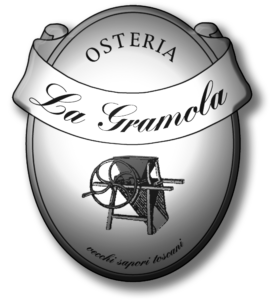
10 - Teatro Giuseppe Verdi
Una grande realtà ed una bellissima storia di volere popolare e di volontariato sociale.
Il paese di Tavarnelle, che nel tempo si arricchiva di imprese commerciali ed artigiane, sviluppava anche attività creative e di svago, un bell’esempio di tutto questo è stato il Teatro Verdi, le cui origini sono sicuramente da ricercare nel 1800.
Un bellissimo teatro, una copia, più piccola del teatro Verdi di Firenze. L’interno a pianta ovoidale, era composto di una platea, con addobbi e sfarzi in velluto rosso ovunque, tre ordini di palchi, posti a ferro di cavallo.
I parapetti dei palchi erano imbottiti con stoffa rossa come le poltroncine della platea. Al centro del secondo ordine c’era il palco riservato alle autorità. Il soffitto, realizzato in canniccio, reggeva un grosso e pesante lampadario. Un vero splendore, per una paesino di campagna che stava crescendo sia economicamente sia come numero di abitanti. La proprietà era di tre famiglie di Tavarnelle.
La Guerra però è passata anche da qui ed i bombardamenti hanno segnato fortemente la piccola cittadina, il palazzo comunale distrutto, e tanti altri edifici del paese subirono la stessa sorte. Del Teatro Verdi fu colpito il tetto, che cadendo nella platea fece danni ai palchi, ai lampadari, ed anche ai bellissimi tendaggi.
Ma il desiderio di ripresa, la forza di volontà dei cittadini dettero nuovamente vita a questo luogo di svago. I ricordi di chi ha vissuto questi momenti parlano degli aiuti di tutti i cittadini, e della disponibilità della proprietà, allora erano tre famiglie del paese.
Così il teatro, ritrovò il proprio tetto, anche se non erano più agibili i palchi, ma la platea poté nuovamente ospitare la popolazione e riprendere
Ripresero le proiezioni di film, il sabato sera e la domenica pomeriggio e sera. In estate si allestiva anche il cinema all’aperto, nel giardino posteriore. Nonostante l’impegno l’affluenza del pubblico si andava progressivamente riducendo ed alla fine degli anni ’50 fu deciso di chiudere l’attività.
Ma ancora un’altra storia doveva interessare questo luogo, e fu così che anche la costituzione del circolo ACLI (Associazioni Cristiane Lavoratori Italiani, voluta dalla Chiesa nel 1944 e parteciparono alla costituzione di un sindacato unitario, la Confederazione Generale Italiana del Lavoro. CGIL) diede nuova linfa a questo locale. Molti furono gli aderenti a questa associazione e fu contattata la proprietà del vecchio teatro verdi per l’acquisto. Fu trovato un accordo e, con l’accensione di un mutuo bancario ed una sottoscrizione a fondo perduto di tante persone, fu concluso l’acquisto ed iscritto fra le proprietà dell’associazione.
Su progetto dell’Arch. Pestelli, fu stilato un piano di lavoro che prevedeva la costruzione di un solaio a circa metà altezza, realizzando poi una saletta d’ingresso, angolo bar, saletta TV e sala in quella che era stata la platea del teatro Verdi.
Nel ’60 per la festa dell’Immacolata, (8 dicembre) fu inaugurato l’accogliente locale, ma solo dopo pochi anni si sentì la necessità di ampliarsi agli spazi superiori, e nel ’65 fu aperto anche il teatro nelle stanze superiori, iniziando una vivace attività con conferenze ed eventi culturali. Da ricordare l’apertura di un ufficio per le consulenze di assistenza pensionistica e fiscale.
Gli anni ’70 segnarono un ulteriore nuovo assetto dell’ambiente, ci fu la scissione dall’ACLI per confluire nell’MCL ed una cooperativa locale divenne proprietaria del locale gestendo così in proprio tutta l’attività.
Iniziava una nuova vita, che lo ha visto nel tempo accogliere grandi artisti dello spettacolo come, Claudio Villa, Ornella Vanoni, Orietta Berti, Don Backy e molti altri.
Poco prima della ricorrenza dei 60 anni dalla fondazione, la sala del piano terra è stata ristrutturata in maniera molto elegante ed accogliente per rispondere sempre meglio alle nuove esigenze della popolazione che sembra apprezzare sempre con molto piacere e condivisione.
Over time the town of Tavarnelle was enriched by commercial and artisan enterprises and developed creative and leisure activities. A fine example of this was the Verdi Theater, whose origins can be found in the 19th century.
The attractive theater was a smaller copy of the Verdi Theater in Florence. The ovoid interior was composed of orchestra seating, decorated with sumptuous red velvet, and three tiers of boxes in a horseshoe arrangement. The parapets of the boxes were padded with red fabric to match the orchestra seats. At the center of the second order there was the special box reserved for authorities. The ceiling, made of reeds, held an impressive chandelier. The theater, owned by three families from Tavarnelle, was a truly splendid addition to the country village as it was growing economically and in population.
However, the war passed through Tavarnelle and the bombings left their mark on the small town: the town hall was destroyed, as were many other buildings. The roof of the Verdi Theater was hit and the falling debris damaged the orchestra seating, boxes, chandeliers and the beautiful stage curtains.
But the desire for recovery and the will of the townspeople gave new life to this place of entertainment. Those who lived these moments still speak of how the citizens and owners came together to save the town theater. So, the roof was reconstructed, even if the boxes were no longer useable, and the orchestra seating was able to accommodate the population once again.
Films were projected on Saturday evenings and Sundays in the afternoon and evening. In summer, a screen was also set up outdoors, in the back garden. Despite the efforts, attendance gradually decreased and at the end of the 1950s it was decided to close the theater.
But this wasn’t the end of the story. An association, the Associazioni Cristiane Lavoratori Italiani (ACLI), and its sister trade union, the Confederazione Generale Italiana del Lavoro (CGIL), breathed new life into the building. Many locals were members of these groups and the old owner of the Verdi Theater was contacted with the intent to purchase it. Thanks to a bank loan and many donations, the purchase was concluded and the building was recorded as belonging to the association.
Based on a project by architect Pestelli, a plan was drawn up that called for the construction of a new ceiling about halfway up to create a small foyer, a bar, a TV room and a hall in what had been the orchestra seating area of the old Verdi Theater.
The new premises were inaugurated in 1960 for the feast of the Immaculate Conception (December 8), but only a few years later it was decided to expand into the upper spaces. In 1965 rooms on the upper floor were opened, offering spaces for conferences and cultural events. It is worth mentioning that an office for pension and tax advice was also added.
The 1970s marked another change to the structure. The original association, ACLI, merged with the Movimento Cristiano Lavoratori (MCL) and a local cooperative became the owner of the building and managed the various activities. This new iteration brought some well-known entertainers to the theater: Claudio Villa, Ornella Vanoni, Orietta Berti, Don Backy and many others.
Shortly before the 60th anniversary of the foundation, the hall on the ground floor was renovated elegantly in order to better meet the changing needs of the local citizens who always seem to appreciate what this long-standing building has to offer.
Approfondimenti
Gallery
Collabora con noi!
Realizzazione a cura di:




